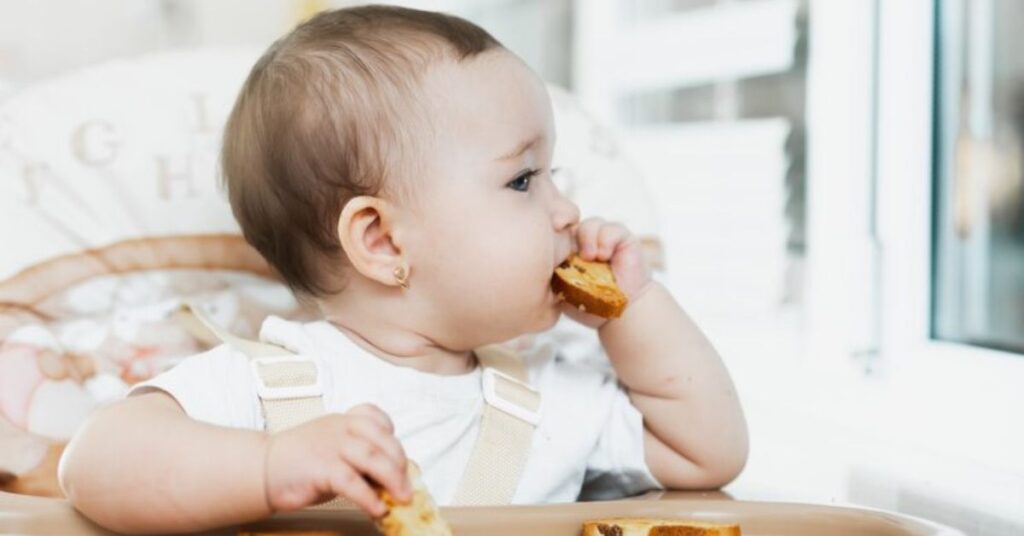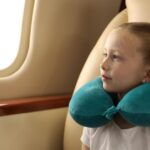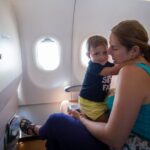Last Updated on August 16, 2023 by Muhammad Sohaib
Baby Puffs
Baby Puffs are tiny which are formulated from grains like rice, wheat, or corn and are designed for infants just starting to eat solid foods. These snacks are ideal finger foods, promoting independent eating in babies.
They are available in many flavors and varieties. They are easy to chew and swallow and frequently contain vitamins and minerals. They are a practical and easy way to add more calories and nutrients to a baby’s diet.
Baby Puffs are generally seen as a healthy snack option for young children because of their low sugar and fat content.
When Can Babies Start Eating Puffs?
Puffs can usually be introduced to babies at 6 to 8 months of age. To ensure that your infant is developmentally ready for this kind of food, you should, however, always speak with your pediatrician.
Puffs can aid in the development of your baby’s fine motor skills and are a good way to introduce them to new tastes and textures.
Additionally, you ought to refrain from offering your infant salty or sugary puffs.
What Indicates A Baby Is Prepared To Eat Puffs?
The readiness of a baby to eat solid food or puffs is indicated by a number of signs.
1- Baby sit independently
A child who can sit by themselves will probably be able to manage eating with growing independence. To properly eat, Iit is necessary to be comfortably seated , often in a high chair or other similar arrangement.
Baby food puffs can help with the improvement of chewing and swallowing skills as well as the development of vital muscle coordination. Even after a baby can sit unaided, it is vital that an adult always watch over their eating.
This oversight is crucial to avoid potential choking incidents or unintentional asphyxia caused by things that are within their reach.
2- Baby starts Chewing
When the baby is able to push the food to the back of their mouth and towards their throat, introduce some foods from your diet, such as bread, toast, etc.
3- Displaying Curiosity towards Solid Foods
When your baby is able to sit up, crawl, or walk without assistance.
Test your baby: placing a small portion of food within their reach on a table, high chair tray, or the floor, and observe whether they exhibit an eagerness to use their fingers to grasp it..
Initial finger snack which you offer to the baby should be clean and ideally soft.
Provide a small amount and observe whether your baby can pick it up and feed themselves. If you have any confusion or doubts about their ability to self-feed, it’s best to avoid giving them this particular meal.
4- Appetite
At 6 to 8 months, If your baby seems consistently hungry after breastfeeding or formula, it could be a sign that they need more nutrients. So then you should introduce solid food that’s fulfil the requirement of youe baby
Are Puffs a Choking Hazard for Children?
Yes, puffs, especially the small, round baby puffs or toddler snacks, can be a choking hazard for young children. These snacks are made to dissolve quickly in the mouth, but they can become stuck in the throat and possibly result in choking if they are not eaten thoroughly or if a kid tries to swallow them whole.
When young children are eating, parents and other adults should always keep an eye on them, especially if the food is small and choking-hazardous, like puffs.
- Moderate Protein: Offer only a few pisces to your baby at a time
- Observe Reaction: Observe their reaction and monitor how well they can manage grinding and processing the Puffs using their tongue, teeth, and gums.
- Respect Preferences: Pay attention to your baby’s likes and dislikes. If they reject a certain flavor or texture, try something else
- Clean Environment: Ensure the eating area is clean.
Conclusion
Baby puffs are a great way to get your young eater introduced to solid foods. These little, light snacks aid in their development by introducing new tastes and textures. Puffs are a fun method for infants to try feeding themselves and begin using their fingers.
Simply keep an eye out for your baby’s readiness signals and follow the recommended age range for giving them puffs. This is also a good time for them to start learning how much food they need at each meal because their immune system is now strong enough to tolerate the cereal. Always keep an eye on your kid while they are snacking since safety is very important.






